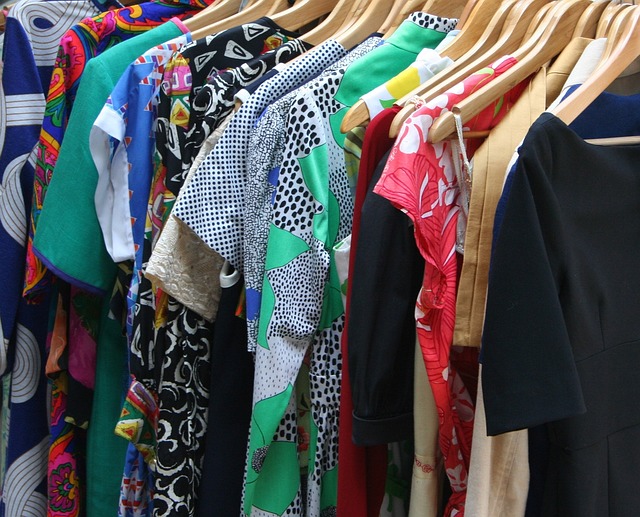
Understanding Fashion: The Role of Garments in Defining Trends
Fashion is an ever-evolving reflection of culture, society, and individual expression. At its core, it is much more than the clothes we wear; it’s a powerful medium through which we convey our identities, beliefs, and status. Garments, as the tangible elements of fashion, play a crucial role in shaping and reflecting trends. This blog explores how fashion influences and is influenced by the garments we choose, and how these choices contribute to the broader fashion narrative.
The Essence of Fashion
Fashion is an intricate blend of art and function. It encompasses the styles, trends, and garments that people wear, as well as the creative expression behind those choices. Throughout history, it has served as a mirror to societal changes, reflecting everything from economic conditions to technological advancements. It is a dynamic field where designers, cultural icons, and everyday individuals contribute to the evolution of style.
At its heart, it is about self-expression. The garments we choose to wear allow us to project our personalities and stand out in a crowd. Whether it’s a tailored suit or a casual pair of jeans, every piece of clothing carries a message, intentionally or otherwise. The intersection of personal taste and current trends defines how we approach it.
Garments: The Building Blocks of Fashion
Garments are the fundamental elements through which personality is expressed. They range from everyday wear to high couture, each serving a unique purpose and contributing to the overall fashion landscape. Understanding the role of garments helps us appreciate how fashion trends emerge and evolve.
- Historical Significance: Garments have played a significant role throughout history, shaping and reflecting cultural identities. From the opulent gowns of the Renaissance to the sleek silhouettes of the 20th century, historical garments tell stories of their times. Designers often draw inspiration from past eras, reinterpreting historical styles to create contemporary fashion statements.
- Trend Formation: Fashion trends are largely dictated by the garments that gain popularity. Designers, celebrities, and influencers showcase new styles, which then filter down to everyday consumers. Garments that are innovative, unique, or have a distinct aesthetic often set the stage for new trends. For example, the rise of streetwear can be attributed to garments that blend casual comfort with high-fashion elements.
- Cultural Impact: Different cultures have unique fashion practices that influence global trends. Traditional garments, such as the kimono in Japan or the sari in India, offer a glimpse into cultural heritage. As these garments are adapted and incorporated into modern fashion, they contribute to a broader understanding and appreciation of diverse styles.
- Personal Expression: Beyond trends, garments play a pivotal role in personal expression. The choice of what to wear can reflect a person’s mood, aspirations, or identity. Fashion provides a canvas for individuality, allowing people to experiment with different looks and styles. This personal connection to garments reinforces their importance in the fashion world.
The Lifecycle of Fashion Garments
Understanding the lifecycle of fashion garments provides insight into their role in shaping trends and consumer habits. The process begins with design and ends with the garments either being recycled, repurposed, or discarded. Each phase contributes to the broader it’s narrative.
- Design and Production: The creation of garments starts with design. Designers sketch and conceptualize new pieces, considering fabric, cut, and color. Once the design is finalized, garments are produced, often involving intricate craftsmanship and the use of advanced technology. The production process can impact the garment’s quality and its place within trends.
- Retail and Consumption: After production, garments are introduced to the market. Retailers play a key role in how latest trends are disseminated, from high-end boutiques to fast-fashion chains. Consumers then select garments based on their preferences, societal influences, and current trends. This phase highlights the relationship between fashion creators and consumers.
- Sustainability and Recycling: In recent years, the industry has faced increasing scrutiny regarding sustainability. The environmental impact of garment production and disposal has led to a growing emphasis on eco-friendly practices. The designers and brands are exploring ways to create garments that are not only stylish but also sustainable. This shift influences how garments are designed, produced, and eventually discarded.
Garments and Fashion Forward
The future is closely tied to innovations in garment design and production. Advances in technology, such as 3D printing and smart fabrics, are reshaping the way garments are created and worn. These innovations promise to make it more personalized, functional, and sustainable.
- Technological Integration: The integration of technology into fashion is transforming the garment industry. Smart textiles, for example, can change color or texture based on environmental conditions. These technological advancements offer exciting possibilities for future fashion trends and enhance the functionality of garments.
- Sustainability Initiatives: The industry is increasingly focusing on sustainable practices. Designers are exploring eco-friendly materials and production methods to minimize environmental impact. The rise of second-hand shopping and clothing recycling programs also reflects a growing awareness of fashion’s environmental footprint.
- Global Influences: It becomes more globalized, garments are influenced by diverse cultural perspectives. Cross-cultural exchanges enrich fashion, leading to innovative and inclusive designs. This global perspective broadens the scope of it and encourages a more diverse range of styles and trends.
Conclusion
It is a vibrant and multifaceted field where garments play a crucial role in shaping trends and personal expression. From their historical significance to their impact on modern trends, garments are central to it’s narrative. As we move forward, the interplay between fashion and garments will continue to evolve, influenced by technological advancements, sustainability efforts, and global cultural exchanges. Understanding this relationship enriches our appreciation of it and highlights the importance of garments in reflecting and shaping our world.